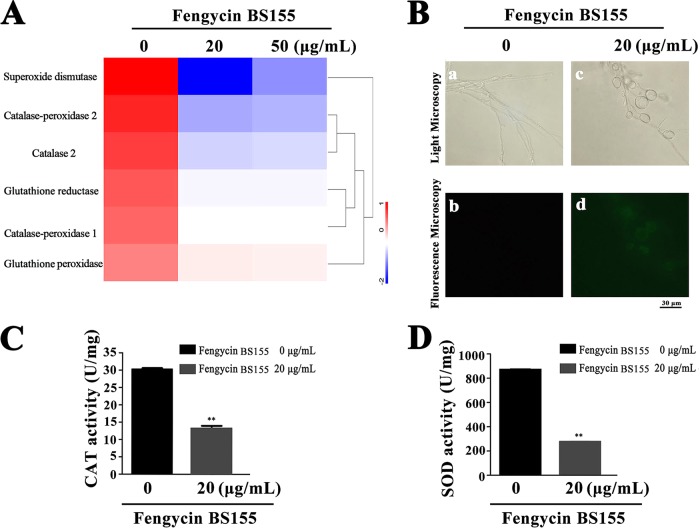FIG 4.
Reactive oxygen species (ROS) accumulation in M. grisea hyphal cells after treatment with fengycin BS155. (A) Proteomic, clustering, and heatmap analyses of differentially expressed ROS-scavenging enzymes following treatment with different concentrations of fengycin BS155. The relative protein expression levels of ROS-scavenging enzymes (fold change ≥1.5 or fold change ≤0.67 and P < 0.05) were clustered and analyzed. (B) ROS accumulation of M. grisea hyphal cells observed by light microscopy (a, c) and fluorescence microscopy (b, d). Representative fluorescence micrographs of M. grisea hyphal cells stained with 10 μM 2′,7′-dichlorofluorescein diacetate after treatment with 0 μg/ml (b) or 20 μg/ml (d) fengycin BS155. The scale bar applies to all panels. Effects of fengycin BS155 on the activities of CAT (C) and SOD (D), the ROS-scavenging enzymes, in M. grisea hyphae. The fungal hyphal cells were treated with 0 μg/ml or 20 μg/ml fengycin BS155 prior to enzyme activity assays. The mean expression values ± SDs are reported relative to the control. **, P < 0.01.

